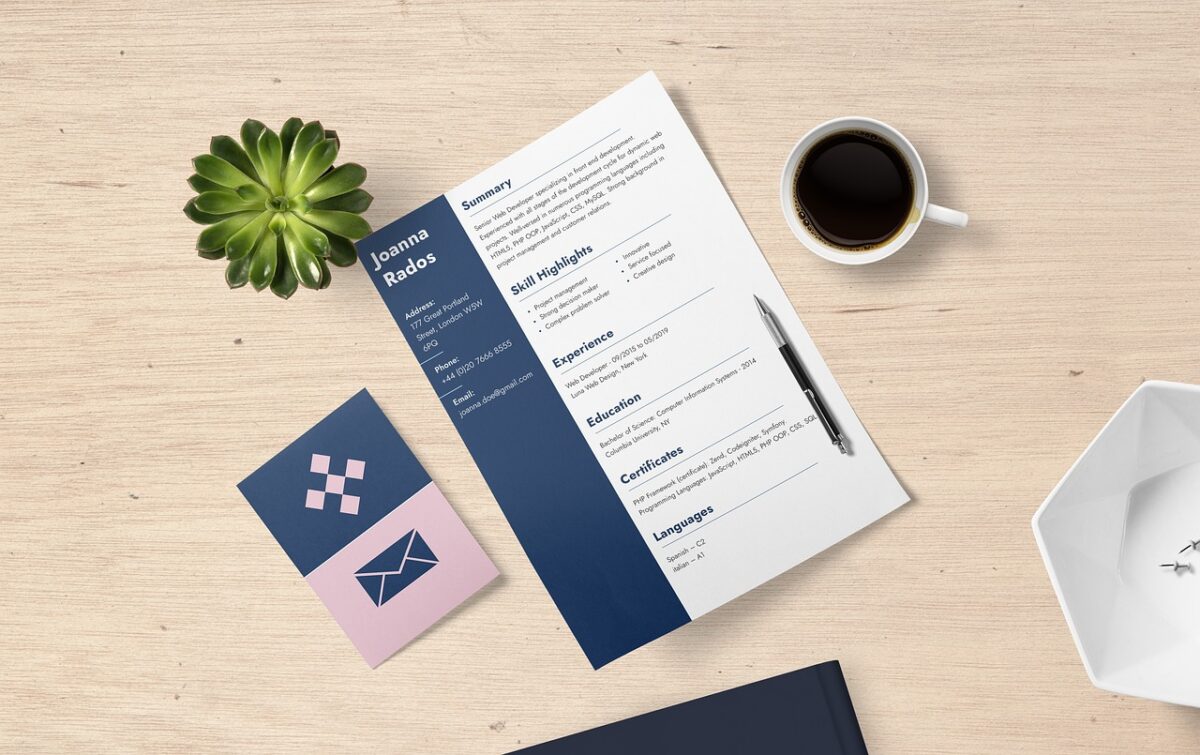How To Describe Work Environment In Job Descriptions

Crafting an accurate and detailed description of the work environment in job listings is crucial for employers looking to attract the right candidates. Businesses can better align with the expectations and lifestyles of prospective employees by clearly outlining whether the role is based in a traditional office, remotely, within a dynamic hybrid setup, or even outdoors. This transparency enhances the appeal of job advertisements. It ensures that applicants thoroughly understand what to expect, thereby increasing the likelihood of attracting individuals who will thrive in the company’s specific working conditions.
From the bustling floor of a warehouse to the collaborative buzz of a creative studio, each type of work environment carries distinct advantages and appeals to different skill sets and personalities. Accurately portraying these settings is a key component in successful recruitment strategies. Join us as we reveal how to describe a work environment in your job descriptions.
Quick Links:
- Understanding Different Work Environments
- Detailing Workplace Culture And Company Values
- Incorporating Physical Demands And Work-Life Balance
- Compliance With The UK Disabilities Act
- Defining Job Duties And Required Skills
- Examples You Can Use In Job Descriptions
- Job Description Writing And Recruitment Resources
- Job Description Work Environment FAQs
Highlights And Key Takeaways:
- Describing your workplace culture and values accurately can have a significant impact on both the quality and fit of your applicants.
- We explore 12 types of work environment and the key aspects to write into your job description.
- Our UK Job Description Library is a comprehensive resource designed to streamline the creation of precise and compelling job descriptions.
Understanding Different Work Environments
Navigating the array of work environments is crucial for employers aiming to attract the right talent. Each setting caters to different preferences and operational needs, impacting how job roles are structured and performed. Here’s a detailed guide to describing work environments in a job description:
1. Remote Work Environment
- Emphasis: Celebrated for its flexibility and independence, remote work is ideal for candidates who prefer working from their chosen environment without the daily commute.
- Tools Used: Specify Slack, Zoom, and Trello communication tools that support a collaborative environment remotely.
2. Full-Time
- Definition and Expectations: Full-time roles typically involve a standard 35-40 hour work week, providing a consistent schedule and often benefits such as health insurance, paid time off, and retirement plans.
- Cultural Fit: Best for individuals looking for stability and long-term career opportunities within a company.
3. Permanent
- Stability and Growth: Permanent positions offer job security and the chance for long-term career development within an organisation. They are ideal for individuals seeking to grow with a company and contribute to its long-term goals.
- Commitment to Company Culture: Emphasise the role’s integral part in shaping and sustaining the company’s culture and long-term success.
4. Contract
- Flexibility and Variety: Contract roles are defined by a set duration and specific project focus, offering flexibility and the opportunity to work on diverse projects.
- Skills Development: Ideal for those looking to expand their skill set rapidly, as contract positions often require adapting to new environments and technologies quickly.
5. Hybrid Model
- Combination of Environments: Merging the best of both worlds, the hybrid model offers a flexible schedule that balances remote and office-based work, providing an ideal work environment for those who prefer independence and office interaction.
- Scheduling Expectations: Define the flexible schedule clearly – days expected in the office versus at home – to set clear expectations.
6. Office Environment
- Characteristics and Benefits: Typically structured, the office setting fosters a stable routine and easy access to collaborative environments, promoting regular interaction and teamwork.
- Describing Setup and Culture: Highlight the office layout, whether open-plan for fostering a collaborative environment or partitioned for those who prefer working with more privacy, along with amenities that support a productive atmosphere.
7. Warehouse Settings
- Physical Demands and Dynamics: Emphasise the physical demands typical of a warehouse environment, which includes handling goods and operating machinery, suitable for those who thrive in active, fast-paced roles.
8. Outdoor Environments
- Nature of Work: Ideal for those who prefer working outdoors, these roles often involve physical tasks in varying weather conditions.
- Physical Considerations: Mention the need for physical robustness and preparedness to handle environmental elements.
9. Flexible Schedules
- Definition and Advantages: Flexible schedules allow for varying start and end times, providing significant advantages in work-life balance and appealing to those who manage personal commitments alongside professional duties.
10. Inclusive Workplaces
- Compliance and Promotion: Ensure descriptions reflect adherence to the UK Disabilities Act, invite a diverse range of applicants, and promote a culture of inclusivity.
- Benefits: Highlight the enriched collaborative environments fostered by diverse and inclusive hiring practices.
11. Lone Worker Conditions
- Safety and Independence: Discuss the safety measures in place and the suitability of these roles for candidates who work independently and manage their workflows effectively.
12. Collaborative Spaces
- Teamwork and Creativity: These spaces are designed to encourage teamwork and creativity, suitable for roles that benefit from dynamic group interactions and ideation sessions.
For more insights on crafting job descriptions that resonate with diverse job applicants and younger candidates like Millennials and Gen Z, visit our blog on How To Attract Millennials And Gen Z Job Candidates and Double Your Job Applications By Offering Flexible Or Home-Based Opportunities. These article offers strategic advice on positioning your company as an attractive workplace that aligns with the values and work preferences of the younger and more diverse workforces.
Employers can articulately describe these diverse work environments and set clear expectations, thereby attracting candidates who are the best fit for their organisational culture and operational needs.
Detailing Workplace Culture And Company Values

Aligning job descriptions with your company’s culture and values is not just about attracting candidates; it’s about finding individuals who will thrive within your organisational ethos and contribute positively over the long term. Describing your workplace culture and values accurately can have a significant impact on both the quality and fit of your applicants.
Importance of Alignment:
- Company’s Culture and Values: Clearly articulating the company’s culture and values in job descriptions helps ensure that potential hires are not only aware of but are excited about the ethos they will be entering. This alignment encourages candidates who resonate with these values to apply while also setting expectations on contributing to the company’s goals.
Articulating a Supportive and Positive Workplace Culture:
- Positive Work Environment: Mention how managers support not just the career growth but also the well-being of current employees, fostering a positive work environment where new hires feel welcomed and valued from day one.
- Focus on Team Dynamics: Describe how each team player is crucial to the company’s success, creating a sense of community and shared purpose. For example, “Our team players are the cornerstone of our success, driving us forward with their commitment and creativity.”
Phrasing Examples:
- Encourage Candidates: Use phrases like “We encourage candidates who thrive in environments where innovation and initiative are valued” to attract individuals who are a good fit for an active and dynamic work style.
- Reflecting Company’s Ethos: Example phrases could include “Join us to contribute to a mission-focused organisation where every role has a meaningful impact” or “Our commitment to excellence is reflected in our pursuit of providing outstanding service, which aligns with our core values of integrity and teamwork.”
To delve deeper into infusing your job descriptions with company culture, visit our blog on How To Infuse Company Culture And Brand Values Into Your Job Descriptions. This resource further guides weaving your brand’s unique identity into every recruitment message, ensuring a cohesive and attractive presentation to prospective applicants.
Through thoughtful articulation of your workplace culture and company values in job descriptions, you not only attract candidates who are likely to be a good cultural fit but also set the stage for their long-term engagement and satisfaction within your company.
Incorporating Physical Demands And Work-Life Balance

Accurately describing a role’s physical requirements and expectations is essential in the recruitment process. This transparency helps prospective employees determine if they are well-suited for the position’s demands. Simultaneously, addressing work-life balance is crucial for showcasing the company’s environment as one that values employee well-being.
- Describing Physical Requirements and Expectations Clearly: When detailing job roles, it’s essential to specify any physical demands explicitly. For example, if the position involves heavy lifting, repetitive motions, or extended periods of standing or walking, these should be clearly stated. This special attention to physical detail ensures that candidates clearly understand what will be expected of them and can assess their ability to meet these demands.
- Addressing Work-Life Balance: Work-life balance is a pivotal aspect of a modern employment package. Illustrate how your company supports this balance through flexible working hours and dedicated support programs. Mention initiatives such as remote working options, mental health days, and company activities that promote a healthy lifestyle. These benefits should be highlighted as part of the company’s environment, illustrating a commitment to the health and satisfaction of its employees.
For more insights into how these elements, including work ethic, can be effectively communicated in your job descriptions, consider reading our blog on Should You Include Work Ethic In A Job Description? This article explores the balance between detailing job demands and promoting a culture that values hard work and employee wellness.
By clearly defining physical roles and promoting a balanced approach to work and personal life, companies can attract candidates who are capable of fulfilling job requirements and are likely to thrive in an environment that values their health and well-being.
Compliance With The UK Disabilities Act

Ensuring job descriptions meet the legal standards set by the UK Disabilities Act is crucial for fostering an inclusive and accessible workplace. This compliance protects the company from legal repercussions and demonstrates a commitment to diversity and inclusion, appealing to a broader range of job seekers.
Meeting Legal Standards for Inclusivity and Accessibility:
It’s important that job titles and descriptions reflect the essential functions of the role clearly and accurately, without inadvertently discriminating against persons with disabilities. This includes using language that focuses on the abilities required to perform the job rather than how tasks are accomplished. For example, stating that a job involves “communicating effectively with team members” rather than specifying “must speak with team members” allows for using assistive technologies or alternative communication methods.
Four Practical Tips for Compliance and Promoting an Inclusive Hiring Process:
- Begin by reviewing how job titles and descriptions are formulated. Ensure the job title and description are neutral and solely focused on the necessary professional capabilities.
- Engage experts or consultants specialised in accessibility to audit your current descriptions and hiring practices.
- Offer alternative formats of job descriptions, such as audio recordings or large print versions, for those with visual or hearing impairments.
- Emphasise in your job postings that accommodations are available upon request, showing prospective employees that your company takes accessibility seriously.
For guidance on crafting job descriptions that align with inclusivity best practices, visit our blog on How Do You Write An Inclusive Job Description? This resource offers detailed advice on incorporating language and policies that welcome a diverse range of applicants, ensuring that all job seekers feel valued and have an equal opportunity to apply.
By adhering to these practices, employers can create a more inclusive recruitment process that meets legal standards and enhances the company’s reputation as an employer of choice for all job seekers, regardless of their abilities.
Defining Job Duties And Required Skills

Communicating the responsibilities and skills required for a role is fundamental to setting clear and realistic expectations for potential candidates. This clarity helps in attracting applicants who are both qualified and prepared for the challenges they will face.
Communicating Responsibilities and Skills:
To ensure that candidates understand what the job entails, list the primary tasks and responsibilities in a structured manner. Use bullet points to break down daily activities, strategic duties, and any other duties that may be required occasionally. Be explicit about the skills needed from past jobs or education for the role, such as problem-solving abilities, technical knowledge, and interpersonal skills. This helps potential employees gauge whether their skill set aligns with the job demands.
Using Clear and Concise Language:
It is crucial to use clear, concise language that accurately describes each task and responsibility. Avoid jargon that might be unclear to someone outside your company or industry. Specify any direct reports the role might have or if the position will require significant collaboration with other departments. This transparency will help applicants understand the scope of the position and the dynamics of the team they might be joining.
For more insights on crafting effective job descriptions, consider exploring our blogs on How To Write The Perfect Job Description, What Are Job Duties? and What Skills To Include In A Job Description? These guides provides practical tips on articulating job duties and required skills in a way that is both engaging and straightforward, ensuring that your job postings attract the right candidates and promote a clear understanding of the role’s demands.
By adhering to these guidelines, Hiring Managers can create detailed job descriptions that convey the essence of the role and enhance the overall recruitment process. This ensures that candidates engaging in a job search have a clear understanding of what their potential future positions would entail.
Examples You Can Use In Job Descriptions
Crafting an effective job description that accurately integrates descriptions of work environments and their benefits can significantly enhance the appeal of your job postings. Here are four real-life examples to illustrate how you can effectively showcase different work settings:
1. Office Environment
Job Title: Customer Service Manager
“Join our vibrant office setting with open-plan workspaces designed to foster collaboration and creativity. Our ideal work environment is bustling and energetic, perfect for those who thrive on team interaction and prefer working in a lively space. Responsibilities include overseeing the customer service team, developing engagement strategies, and ensuring a dynamic flow of communication.”
Download a UK Customer Service Manager Job Description Example.
2. Remote Work
Job Title: Application Software Developer
“Embrace the flexibility of working from anywhere as our next Application Software Developer. This role is suited for self-starters who prefer working independently and are looking for an ideal work environment that supports work-life balance. Duties involve coding, collaborating via digital platforms, and contributing to projects with minimal supervision.”
Download a UK Application Software Developer Job Description Example.
3. Hybrid Model
Job Title: Marketing Analyst
“Perfect for those who prefer a mix of in-office and remote work, this position offers the flexibility to work from home several days a week. The role requires a versatile team player who can handle tasks independently and as part of a collaborative effort during in-office days. Responsibilities include data analysis, campaign strategy development, and cross-departmental coordination.”
Download a UK Marketing Analyst Job Description Example.
4. Outdoor Environment
Job Title: Field Research Assistant
“Step out of the traditional office and into the field as our next Research Assistant. This position plays a big role in gathering and analysing environmental data in various outdoor locations. Ideal for those who love nature and prefer working in diverse settings, the tasks involve extensive travel, physical activity, and data collection.”
Download a UK Field Research Assistant Job Description Example.
Five Tips on Highlighting Unique Attributes of Each Work Environment Type:
- Focus on Fit: Clearly state how the work environment aligns with the responsibilities and duties listed in the job description to ensure candidates’ preferences align with the role.
- Detail the Benefits: Emphasise specific benefits of each environment, such as the flexibility of remote work, the collaborative nature of office settings, or the dynamic aspects of outdoor work.
- Use Descriptive Language: Incorporate vivid descriptions to paint a clear picture of the day-to-day environment. This helps candidates visualise themselves in the role.
- Link Environment to Performance: Explain how the environment contributes to greater productivity and satisfaction, clarifying why it’s considered the ideal work environment for the role.
- Customise by Job Title: Tailor the environment description to the job title and its core duties, ensuring that it enhances the position’s appeal and is relevant to the tasks.
Using these examples and tips in your job descriptions can more effectively communicate the unique attributes of different work environments, helping you attract candidates whose work preferences and styles align with what your company offers.
Job Description Writing And Recruitment Resources
Discover the extensive benefits of our A-Z UK Job Description Library, a comprehensive resource designed to streamline the creation of precise and compelling job descriptions. This library is an invaluable tool for employers and HR professionals across the UK, providing various examples that cover virtually every industry and job title imaginable. By leveraging these expertly crafted samples, you can enhance the clarity and appeal of your job postings, helping to attract the most qualified candidates to your positions.
We encourage you to utilise our Job Description Library to refine your recruitment strategies. Access to our detailed and well-structured descriptions saves time and ensures that you maintain consistency and legal compliance across all your job postings. Here’s how our resources can transform your recruitment process:
- UK Job Description Library: Explore a wide range of job descriptions that are easy to customise for your specific needs, helping you to accurately reflect the duties, skills, and qualifications required for each role.
- Job Spec Template: Streamline the process of drafting job specifications with our adaptable templates, ensuring you capture all essential details effectively.
- Job Advert Templates: Use these templates to craft appealing and informative job adverts that capture the attention of ideal candidates.
- Recruitment Blog: Stay updated with the latest trends and best practices in recruitment through our insightful blog posts.
- Job Board Services: Enhance your recruitment outreach with our job board services, designed to place your adverts in front of the right audience.
By integrating these resources into your recruitment practices, you can significantly improve the efficiency and effectiveness of your hiring process, ensuring you attract and retain the best talent in a competitive market.
Job Description Work Environment FAQs
From Hiring Manager to employer, entrepreneur, small business owner, and HR team member, we answer your questions on writing an effective job description that describes working conditions:
In the UK, the primary types of work environments are the traditional office, remote, and hybrid settings. The traditional office environment typically involves a dedicated physical space where employees interact face-to-face. Remote environments allow employees to work from anywhere outside the conventional office, often from home, utilising digital communication tools. Hybrid environments blend the traditional and remote setups, permitting employees to split their time between working on-site and off-site, thereby combining the structure of office life with the flexibility of remote working.
A positive description of a work environment emphasises its supportive and empowering nature. It is often portrayed as inclusive, fostering collaboration and innovation among team members. Such environments highlight a commitment to professional development and employee well-being and are characterised by open communication, respect for individual differences, and a balanced approach to work-life integration. These features enhance productivity and contribute to a high level of job satisfaction and overall employee morale.
Examples of a good work environment include spaces that support their employees’ professional and personal growth. Such environments typically offer flexible working conditions, robust health and wellness programs, and opportunities for career advancement. Good work environments also foster a culture of recognition and reward, ensuring that achievements are celebrated. Additionally, they provide supportive management and clear communication, creating a trust-based and transparent atmosphere where ideas can flourish and employees can thrive.



